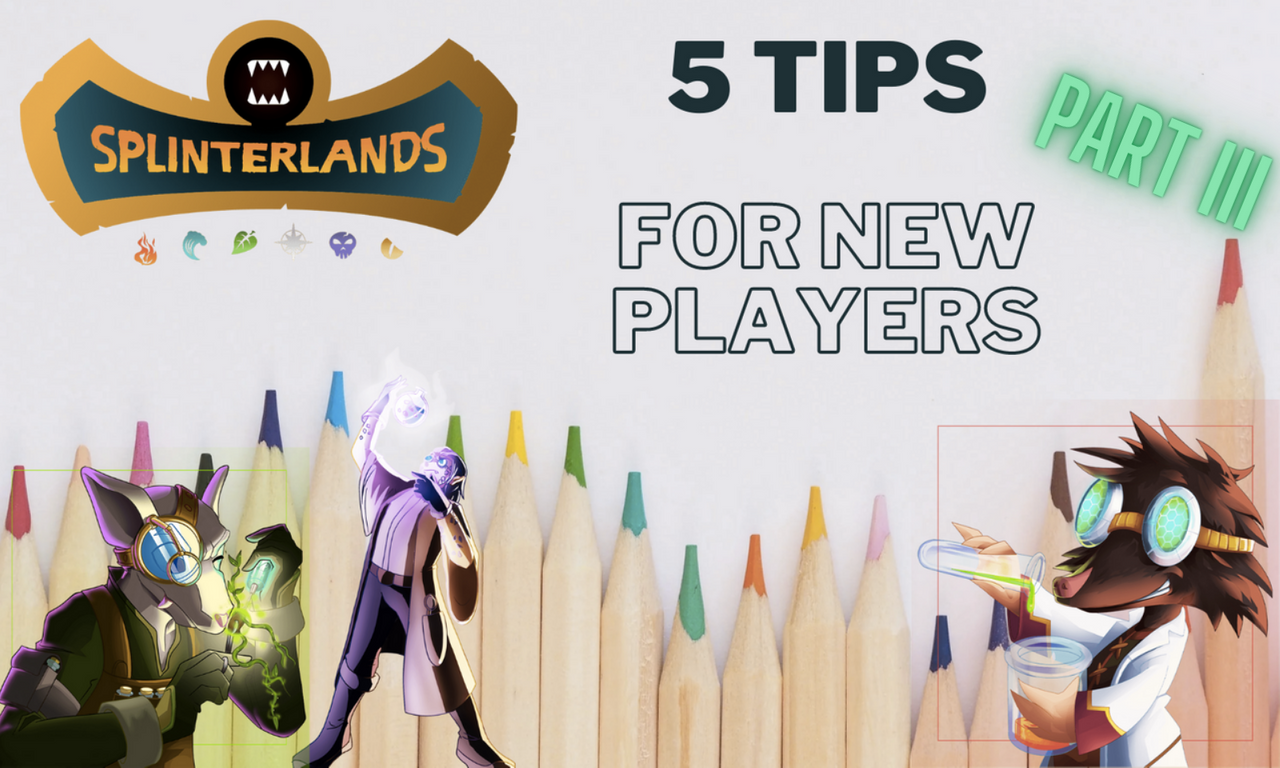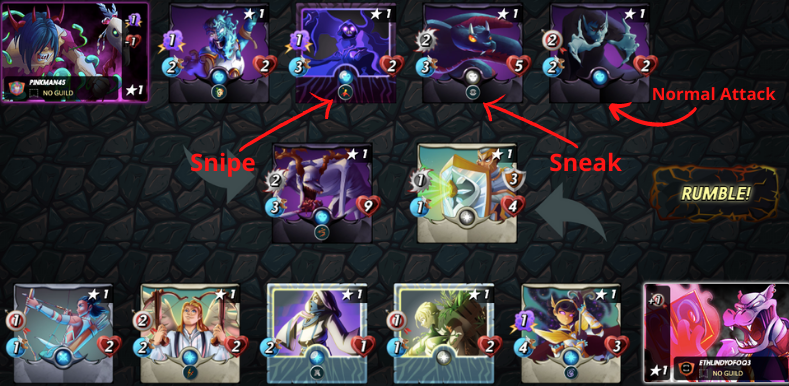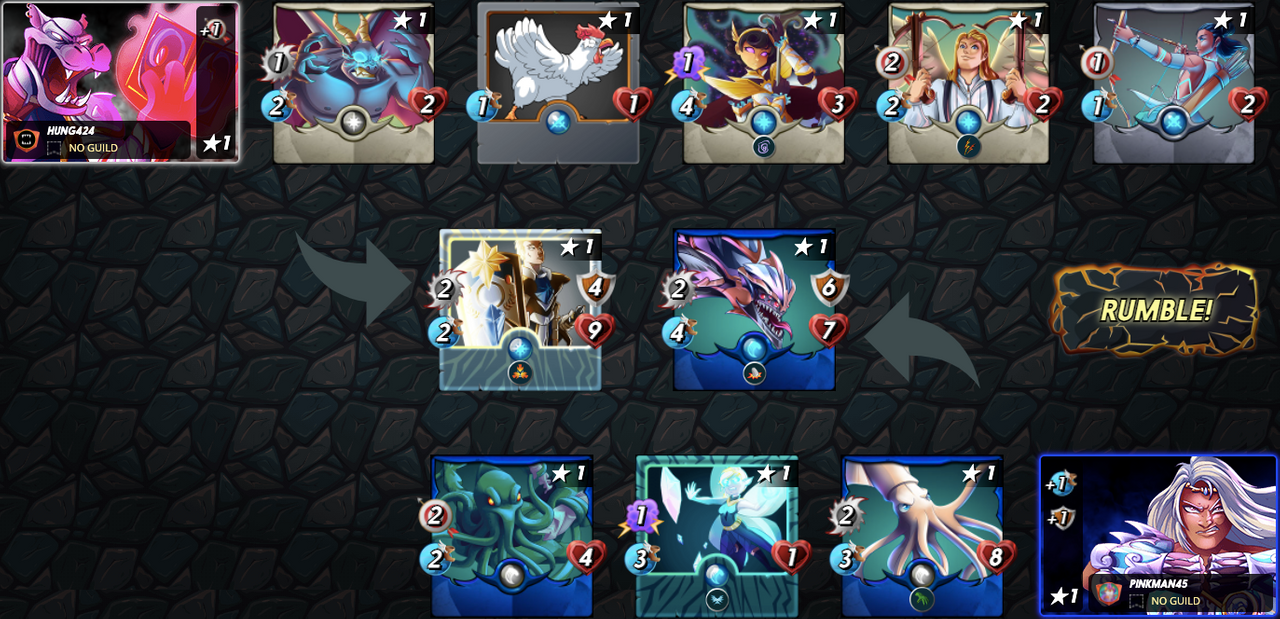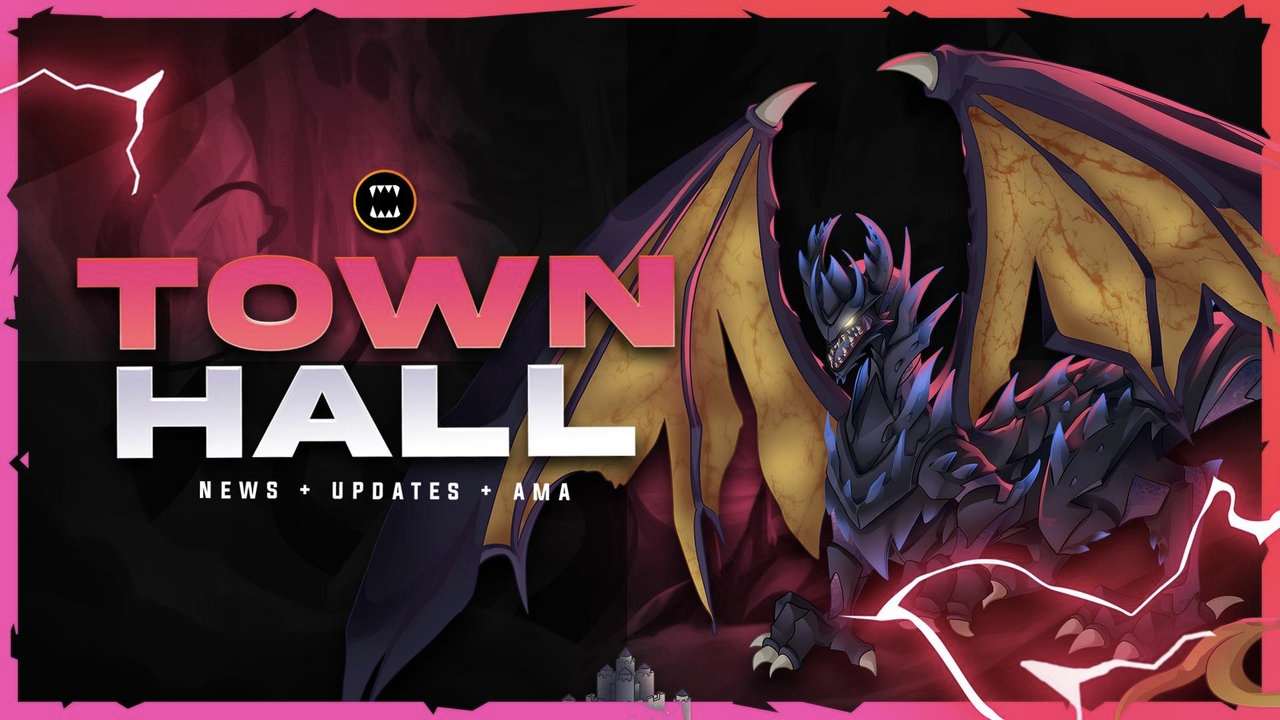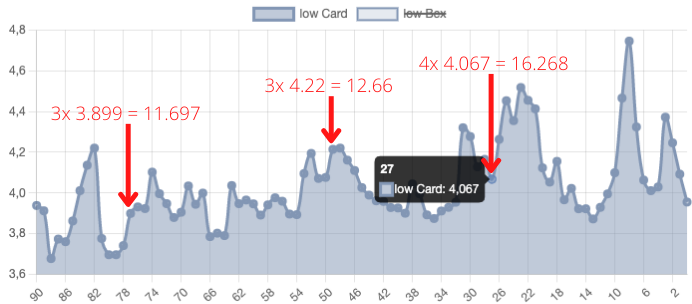Hello everyone,
Splinterlands can be quite complex. From gameplay and strategy to earning and markets there's a lot to unravel. This is why I decided to share 5 tips that will hopefully help newer players out. These will cover all sorts of aspects of the game and while some may seem very obvious other's might not.
This is part III of the series. Previous editions can be found here: Part I, Part II
Without further ado, let's get into it!
Tip Number 1
Focussing your fire. This is a concept in battle that refers to concentrating the majority of your attacks towards the same enemy monster, with the goal to take it out fast. This is important, because dead monsters can't attack, obviously. You don't want to deal a little bit of damage to multiple monsters, because they can all attack back, get healed up or have their armor repaired. Instead you want to take out one monster after another. This is possible with all kinds of attacks and abilities.
Bad example - Full Battle
My attacks are all over the place and I don't kill anything in round 1, losing the match.
Good example - Full Battle
Even though I have Melee, Ranged and Magic attacks, they all attack the first position, winning the match.
Tip Number 2
Watching the Town Hall or reading the summary. There's a saying you should only invest in what you understand. Information is therefore key and there's no better place to get informed about Splinterlands than the Town Halls. These are weekly live streams, where the team talks about ongoing projects, new features, upcoming changes and much more. This is not only great for transparency, but for your personal plan with the game. For example the upcoming changes to the reward system mentioned in the March 23rd Town Hall give a lot of information on how rewards will be distributed in the future and how you might need to adapt in order to be earning.
Tip Number 3
Dollar cost average into the game. Dollar cost average or DCA is a way of investing a certain amount of your funds throughout a set period of time, regardless the price. This way you'll probably buy an asset at a rather high price, but also at a rather low price, equalling each other out to get a good average.
If you would've bought 10 Kelya Frendul all at once on that day, you would've spent $44.53.
If you would've bought 3-4 Kelya Frendul each time over the course of 6 weeks until you had 10, you would've only spent $40.625.
This is obviously hypothetical and you could've gotten lucky and buy all 10 Kelya's at the all time lowest price, but because you probably won't get lucky every time, there's a good chance you would've bought 10 Kelya's at a rather high price also. DCA'ing is simply a way to get an average and it helps not going absolutely mental about your decision when to buy something.
Tip Number 4
Deck building basics. Last episode we talked about leveling up summoners first. This episode I want to follow that up with which monsters to level up. The first thing I do, when building a deck is looking at what the summoner I have offers to the team.
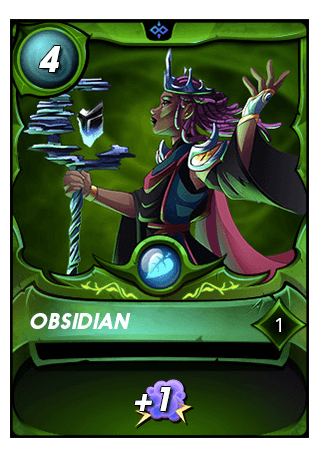
Let's say we got an Obsidian, which gives every one on our team +1 magic attack. To utilize this the most, we need to buy magic attack monsters. Like I said in Tip Number 1, focussing fire is important. Because we already know, we want to use magic attackers and we don't want to spread out our damage, we don't really need to concern ourself's with sneak, snipe or opportunity cards.
What we almost always need is a tank, though. When looking for a tank I usually like to get a very cheap one (2 to 4 mana) for low mana battles and a bigger one (7/8 mana and above) for higher mana battles.
From there I would look for cards to support and round out our main line up. For example cards with Heal, Protect, Resurrect etc. Luckily for us there's a bunch of those cards in the earth splinter, who also have magic attack and synergize perfectly with Obisidian.
One final word of advice when leveling up cards is to look for so called "power spikes" at different levels. These can be new abilities or an additional attack for example. I have a separate guide on this topic here.
Tip Number 5
Reward cards offer great value. With the markets being down and supply being higher than demand prices of reward cards are rather low right now. This might have some people believe that they are not as good as other cards and sell them. While reward cards are a primary way of "earning" in this game and everyone needs to decide for them self what they want to own/purchase, I do believe reward cards currently offer great value. On the one hand some of them are just very strong and will become or already are staple cards in competitive play. If you are serious about playing the game and want to build out your deck and climb ranks, some of them are a must have. On the other hand they offer a great CP/Dollar ratio. In any case once they will go out of print or demand increases it is very, very likely that they will appreciate in value, just like the older reward cards before them have.
Disclaimer
None of this is financial advice. These tips are for educational purposes only and might all fall out of date as both Splinterlands and the Crypto Market in general are subject to constant change.
Referrals
If you're not playing already create an account over at Splinterlands.com and hop right into battle
Thanks to Carrie Allen for the amazing Markdown Tutorial
and to Chris Roberts for this Thumbnail Tutorial
Background Thumbnail image is from Pexels
Free image editing software used Canva
That's it for this episode. I hope you found something informative or interesting, take care and until next time
Pinkman45
